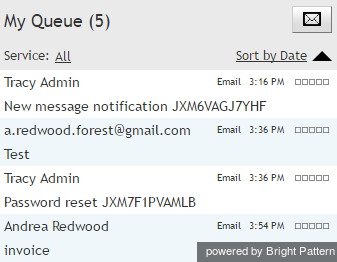Contents
- Introduction
- Starting Your Working Session
- Starting Agent Desktop
- Selecting a Phone Device
- Logging into Agent Desktop
- Installing and Updating the Agent Desktop Helper Application
- User Interface Overview
- Changing Your Agent Desktop Appearance
- Understanding Screen-pop
- Configuring Your User Profile
- Configuring Your Voicemail
- Listening to Voicemail Messages
- Call Forwarding
- Using the Calendar
- Getting Help
- Understanding and Handling Your States
- How to Interpret Your Current State Information
- How to Make Yourself Ready
- How to Make Yourself Not Ready
- Handling Calls
- How to Answer an Incoming Call
- How to Reject an Incoming Call
- How to Make an Internal Call
- How to Make an Outbound Call
- How to Send Numeric Information
- How to Use the Directory
- How to Redial a Previously Dialed Number
- How to Use Favorite Contacts
- How to Mute a Call
- How to Release a Call
- How to Wrap Up After Call Work
- Dispositions and Notes
- How to Hold and Retrieve a Call
- How to Make a Consultation Call
- How to Transfer a Call
- How to Host a Conference
- How to Participate in a Conference
- How to Place a Call in a Service Queue
- How to Connect a Voice Application to Your Call
- How to Use Prerecorded Messages
- How to Record a Call
- How to Stop or Pause Call Recording
- Voice Signatures
- How to Schedule a Follow-up Activity
- How to Send SMS Messages
- Participating in an Outbound Campaign
- General Information About Outbound Campaigns
- How to Review a Calling Record
- How to Reject a Calling Record
- How to Reschedule a Call Attempt
- Handling Service Chats
- How to Accept a Chat Request
- How to Reject a Chat Request
- Chat Messages
- How to Send and Receive Pictures and Documents
- How to Transfer Your Chat Session
- How to Create and Edit Canned Chat Responses
- How to End a Chat Session
- Handling Multiple Chat Sessions
- Handling Mobile Interactions
- Handling Email
- General Information About Handling Email
- Understanding Email Cases and Threads
- How to Accept an Email
- How to Retrieve an Email from the Team Queue
- 1 How to Retrieve an Email from My Queue
- Overview of the Email Working Area
- How to Review an Incoming Email
- How to Mask Sensitive Data
- How to Close an Email without Replying
- How to Change an Assigned Email Service
- How to Transfer an Email
- How to Forward an Email
- How to Change Default Email Font
- How to Compose a Reply
- How to Use My Follow-ups to Send a Follow-up Outbound Email
- How to Use Cases to Send a Follow-up Outbound Email
- How to Send a New Outbound Email
- How to Save an Email as a Draft
- Knowledge Base
- General Information About Knowledge Base
- How to Use a Knowledge Base Article
- Contributing Content to the Knowledge Base
- Other Useful Functions
- Dashboard
- Keyboard Shortcuts
- Ways to Request Assistance
- How to Use Internal Chat
- How to Report a Call Quality Problem
- How to Send Agent Desktop Application Logs to Your Administrator
- Ending Your Working Session
- Error Messages
How to Retrieve an Email from My Queue
As mentioned in the How to Retrieve an Email from the Team Queue section, in addition to the Push and Pull distribution methods, an email can be assigned to you by a supervisor. Depending on your system configuration, if an incoming email is related to a case that you previously handled, such an email can also be delivered to you directly. These emails will appear in My Queue (i.e., your personal queue), from which you will be expected to retrieve them manually. My Queue looks very similar to the Team Queue described in the previous section. It is opened using the same control, displayed in the same area of your application, and provides the same information about each email.
For more information, see section How to Retrieve an Email for the Team Queue.
My Queue also contains emails that you may have worked on previously and saved as drafts. For more information, see section How to Save an Email as a Draft. Drafts are retrieved from My Queue for processing in the same way as new emails.
Emails in My Queue are arranged by the service level agreement (SLA), with the ones closest to the SLA breach appearing on top of the list.
Note: The limited space allocated for the personal queue on the desktop only allows you to see a few emails. You can scroll to see more emails.
The attachment indicator ![]() shows whether there are any attachments in the messages sent or received in the entire email thread. The indicator is displayed for each message in the thread at the end of the line in the queue.
shows whether there are any attachments in the messages sent or received in the entire email thread. The indicator is displayed for each message in the thread at the end of the line in the queue.
To retrieve an email for handling, follow these steps:
- Double-click the email or click the Open button in the editing area.
- The Active Communications List will display the email icon
indicating that you now have an active email on your desktop.
For subsequent email handling steps, see section How to Review an Incoming Email.

